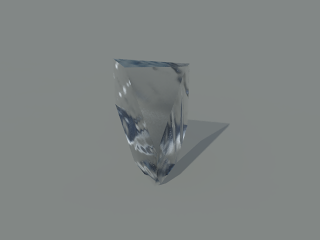For this first project I became very interested in
Crystallography, the study of crystal forms. The nature by which crystals form
gives them a very specific aesthetic I was interested in replicating using
generative/variable methods within Grasshopper. Although true crystallography concerns
itself quite heavily with the chemical reasoning behind crystals forming the way
they do I was much more interested in replicating the final geometry. There are
very many different types of crystals which form under many different
conditions which result in many different forms and geometries. Creating a
single grasshopper file to reproduce the exact parameters of each of these
would be close to impossible. Crystal geometries form in many different ways
and it is important to acknowledge that although there are crystal types it is
very rare for a crystal formation not to have irregularities that differentiate
it from other crystal of the some type. No two crystals are alike. This
conclusion with an understanding of the basic crystal aesthetic and focus on
external geometry lead me to consider using subtractive means of carving away the desired form from the base geometry. The base geometry was
defined with a variable that allowed it to be changed from a triangular prism
to a rectangular prism easily. Three randomly selected points of this prism
were then used to define the rotational axis of the subtractive geometry which
was defined as a basic rectangular prism defined by four points and then
extruded. The dimensions of these prisms were also randomly defined. The
rotational variables of the subtractive geometry are the main variables of the
generated geometry. Randomly generating values for these variables were
experimented with but these did not prove to efficiently generate the desired
aesthetic (a much more complex system which understands the volume of subtraction
was required but a suitable one could not be developed.) Considering this I
choose to manually define these variables to develop the desired aesthetic by
hand. The points being subtracted are still defined randomly as too are the
dimension of the subtractive geometry. The rotation on the z axix, rotation on
the x axis, the extrusion amount and the z-value are meant to be adjusted
manually. For an example of these variable please click here.
Thursday, March 29, 2012
Wednesday, March 21, 2012
Monday, March 19, 2012
Thursday, March 15, 2012
Research: Crystallography
| Quartz |
| Quartz |
| Barite |
| Pyrite |
Sources:
http://www.rockhounds.com/rockshop/xtal/part1.shtml
http://dave.ucsc.edu/myrtreia/crystal.html
http://www.enchantedlearning.com/geology/rocks/pages/crystalsystems.shtml
http://ruppweb.dyndns.org/Xray/101index.html
http://webmineral.com/crystall.shtml
http://en.wikipedia.org/wiki/Quartz
Subscribe to:
Comments (Atom)








































